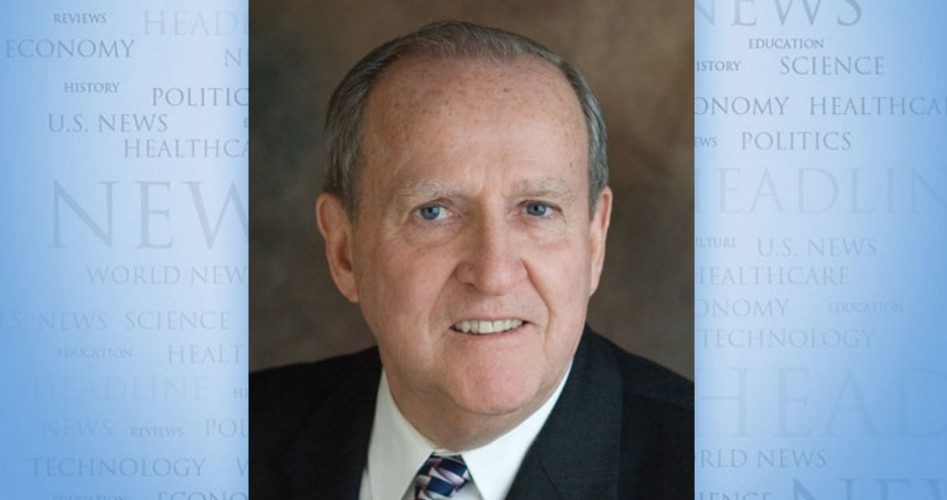
Lyndon LaRouche offered himself as a candidate for president eight times. Gaining ballot position in fewer than half of the 50 States, the highest vote total he ever garnered occurred in 1984 when a mere 76,000 chose him. He passed away peacefully at his heavily guarded compound in Loudon County, Virginia, on February 12, 2019.
Born in New Hampshire and raised in Lynn, Massachusetts, LaRouche styled himself as a conscientious objector during the early years of World War II and spent time in prison for refusing to be drafted. While in prison, he learned about Marxism from fellow inmates and became one of its champions. After release from prison and with the war winding down, he joined the army and ended up as a medic in Burma.
Back in the United States, LaRouche joined the Socialist Workers Party in New York City and conducted study groups for that Trotskyite branch of worldwide communism. He then affiliated with the communist-run Workers League and taught “Elementary Marxist Economics” at a summer program run by the bomb-throwing Students for a Democratic Society. Tiring of numerous squabbles in leftist circles, he started his own National Caucus of Labor Committees in 1969. An early edition of his New Solidarity publication called on Communist Party leader Gus Hall and the Communist Party itself to “accept the alternative of a united front with the [LaRouche run] Labor Committees.” After Gus Hall rejected that suggestion, LaRouche affiliated with the Marxist U.S. Labor Party and was its candidate for the U.S. presidency in 1976, his first fruitless attempt to gain our nation’s top office.
After gaining little support from the Labor Party, the self-styled economic genius and master of political intrigue switched to the Democratic Party and succeeded in gaining $530,000 in federal matching funds in 1980 and $494,000 from that same source of taxpayer money four years later. In 1980, the LaRouche movement gained national attention when young movement stalwarts Janie Hart and Mark Fairchild won Illinois Democratic Party nominations for Secretary of State and Lieutenant Governor. Gubernatorial candidate Adlai Stevenson III, once considered a shoo-in to win the November election, refused to run alongside the two LaRouchies and hurriedly formed a political organization named the New Solidarity Party. But the Hart and Fairchild victories splintered the Illinois Democratic Party and Republican incumbent Jim Edgar easily won reelection.
Over several decades, LaRouche successfully gained undying support from several thousand young people who set up tables at airports and other busy locales to promote the views of their hero, sell literature, seek donations, and recruit more followers. Desperate to attract attention, the ever-resourceful leader of what many considered a weird political cult began attacking the Rockefeller family, Henry Kissinger, even the Trilateral Commission. A 1980 pamphlet issued by Citizens for LaRouche supplied details about Rockefeller banking and political clout but concluded that it was “not the existence of a conspiracy.” It stated further, “Their control per se does not necessarily have to be evil.” This so-called attack amounted to no attack whatsoever. It was an obvious but never openly stated willingness to supplant Rockefeller influence with LaRouche influence.
Among its many fronts and publications, the LaRouche empire spawned Campaigner Publications, the National Democratic Policy Committee, Club of Life, Executive Intelligence Review, New Solidarity International Press Service, Fusion magazine, and Young Scientist. In 1977, LaRouche married German-born follower Helga Zepp who was immediately named leader of her husband’s Schiller Institute, a think tank formed to provide information about the banking and corporate world.
In 1988, LaRouche and some of his closest associates were tried on charges related to fraudulent fund-raising. They were found guilty of taking money from credit card holders who had once supported him, tax evasion, and mail fraud. Given a 15-year sentence (later reduced to five years), the determined presidential candidate ran his 1992 presidential campaign from a Minnesota prison.
Over his many years, LaRouche sought to gain support for a wide variety of unsupportable claims. He accused Britain’s Queen Elizabeth of having a leadership role in the spread of dangerous drugs. He and the organs he created attacked former Congressman Larry McDonald for supposedly being the chief Rockefeller aide in Congress. LaRouche also targeted McDonald for wanting to investigate KGB infiltration of Congress. In time, this disseminator of wild theories became a supporter of the flawed notion that mankind is responsible for catastrophic climate change. He won determined opposition to several of his claims that “Zionists” were blocking his favorite causes. His attack aimed at the privately owned Federal Reserve included replacing the Fed with a federal government-created national bank that would hardly differ from what the Fed has done to America’s dollar.
Media reports about LaRouche have customarily labeled him and his publications “conservative,” a gross absurdity. The movement he spawned has always been a curious mixture of Marxism, anti-establishmentarianism salted with distasteful rhetoric, eerie people control of followers, and dose after dose of unadulterated fantasy.
What will become of the LaRouche empire now that he is no longer able to direct it remains to be seen. If it simply collapses and is no more, knowledgeable Americans will shed no tears.


